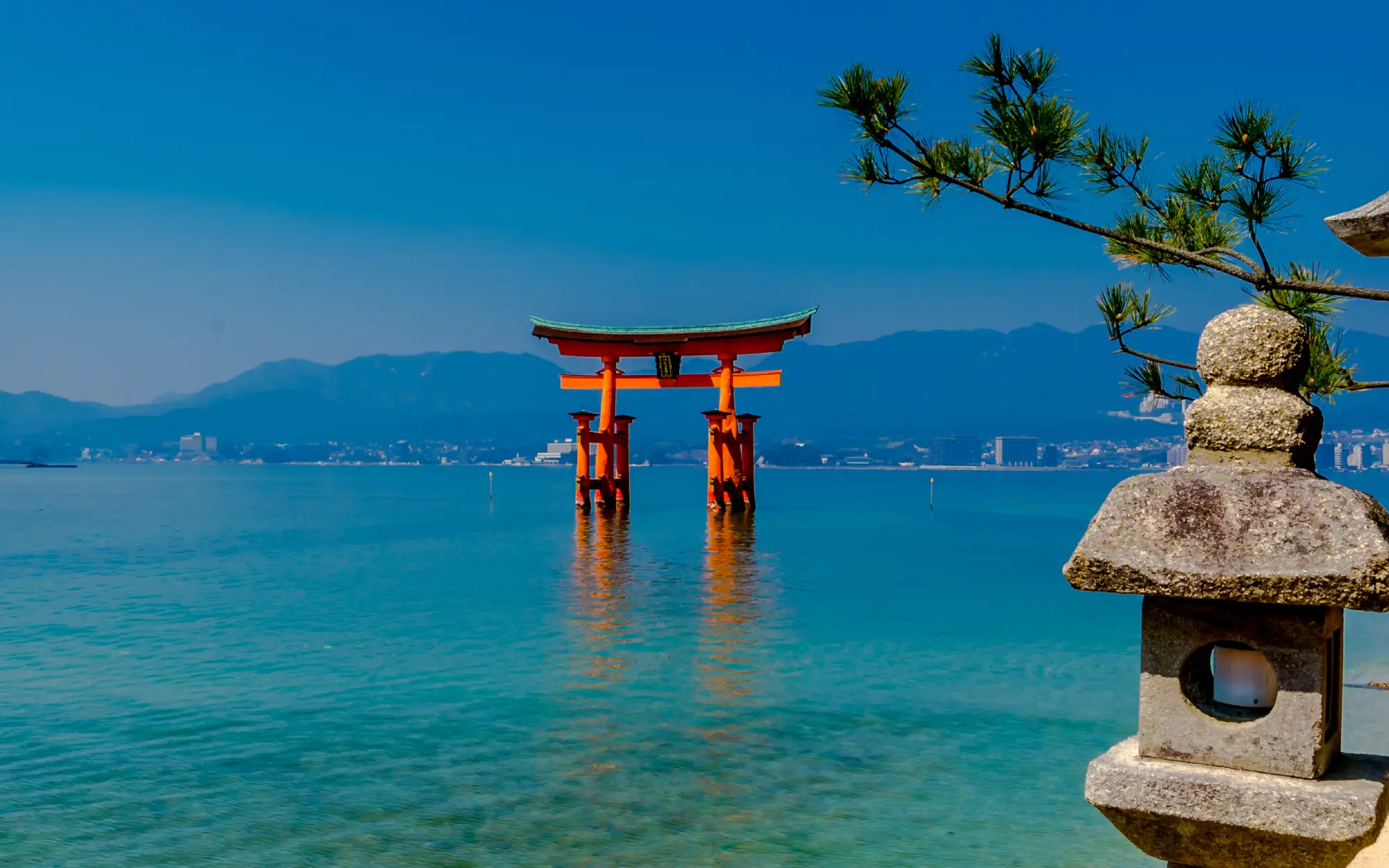
The Great Torii Gate of Itsukushima Shrine, one of Japan's most iconic images
The Great Torii Gate of Itsukushima Shrine, located on the island of Miyajima in Hiroshima Prefecture, Japan, is an iconic symbol of both Shinto tradition and the harmonious relationship between nature and humanity. This majestic gate, seemingly floating on water at high tide, marks the entrance to the Itsukushima Shrine, a UNESCO World Heritage site revered for its beauty and spiritual significance.
The Great Torii Gate serves as the traditional entrance to the Itsukushima Shrine, which dates back to the 12th century. The gate's unique placement in the sea is deliberate, symbolizing the belief that gods reside in nature. The gate appears to float on the water at high tide, creating a stunning visual effect that attracts visitors from around the world.
Constructed primarily of wood and vermilion lacquer, the Great Torii is a striking example of traditional Japanese architecture. Its grand size and bold color stand in contrast to the serene blue of the sea and sky, creating a picturesque scene that embodies the beauty of Japanese cultural aesthetics.
The Itsukushima Shrine is dedicated to the three daughters of Susano-o no Mikoto, Shinto god of seas and storms. The shrine complex, noted for its unique construction that appears to float on water during high tide, is an architectural masterpiece that seamlessly integrates with the surrounding nature.
Visiting the Great Torii and Itsukushima Shrine offers a deeply spiritual experience. The tranquility of the site, combined with the natural beauty of Miyajima Island, provides a serene atmosphere conducive to reflection and reverence.
The Great Torii Gate, rising majestically from the waters of Miyajima, creates a serene and awe-inspiring sight that blurs the lines between the spiritual and the natural world.

When the tide goes out, it is possible to walk towards the Great Torii.
The appearance of the Great Torii changes dramatically with the tides. During high tide, it seems to float on the water, while at low tide, visitors can walk up to and around the base of the gate. This ever-changing nature of the site reflects the Shinto appreciation for the impermanence and constant flux in nature.
The shrine and its Torii gate play a central role in local festivals and cultural events. One of the most notable is the Kangensai Festival, a maritime event where ancient court music is performed on boats around the gate, creating a mesmerizing spectacle.
The preservation of the Great Torii and the shrine is of utmost importance, given their cultural and historical significance. Efforts are continuously made to maintain and restore these structures, ensuring their survival for future generations.
Accessible by ferry from the mainland, Miyajima Island and the Itsukushima Shrine offer a captivating experience. Visitors can explore the shrine, enjoy the scenic beauty of the island, and experience the local cuisine, including the famous Miyajima oysters.
The Great Torii Gate of Itsukushima Shrine is not just an architectural wonder; it's a living symbol of Japan's deep spiritual connection with nature. Its striking presence against the backdrop of Miyajima's serene beauty creates an enchanting experience that transcends cultural boundaries, inviting visitors to ponder the harmonious coexistence of the natural and the divine. In this sacred space, the mystique of ancient traditions converges with the timeless beauty of the natural world, making it a must-visit destination for those seeking to experience the spiritual heart of Japan.
Welcome to Japan!
Another interest sights
Japan
Genbaku Dome, the Hiroshima Peace Memorial
Japan
Iwami Ginzan: the legacy of the cultural heritage of silver mining in the heart of Japan
South Korea
Gamcheon: the transformative power of urban art
Japan
Share this Sight with: